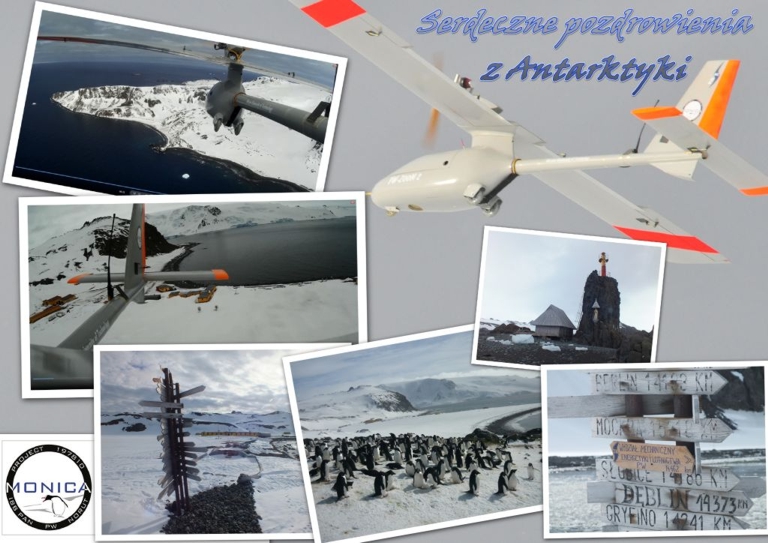MONICA
MONICA - Project founded within the frame of Polish-Norwegian Research Cooperation Program,
titled: “A novel approach to monitoring the impact of climate change on Antarctic ecosystems”
(POL-NOR/197810/84/2013)
MONICA is the acronym of project carried out by the consortium consisted off the following institutions: Institute of Biochemistry and Biophysics (Polish Academy of Sciences), Institute of Aeronautics and Applied Mechanics (Faculty of Power and Aeronautical Engineering – WUT), NORUT Northern Research Institute from Tromsø. Programme Operator is the National Centre for Research and Development, agency responsible for the management and implementation of the Polish-Norwegian Research Programme in Poland.
The main aim of the project is a monitoring of Antarctic fauna, especially the size of population of, so called, indicator species. The penguins are the examples of such community members. On the basis of the data regarding the size of their population, it is possible to conclude about condition of the sea ecosystems and to support a rational economy of the sea food resources by determination of, so called, fishing quotas. Such quotas concern the amount of the krill, which may be caught without disturbing ecological balance. Poland is a signatory of the CCAMLR (Convention for the Conservation of Antarctic Marine Living Resources), and starting from 1977 regularly performs such a monitoring on the research areas including two Antarctic Special Protected Areas (ASPA 128 & ASPA 151), which are placed in the vicinity of Polish Antarctic Station – H. Arctowski on the King George Isle in South Shetlands archipelago.
The secondary aim of the project is a performance of the ortophotomaps of both research areas.
Estimation of penguins’ population size use to be done in their birth-colonies during Antarctic spring. Up to now it was performed on the basis of direct observation and the photos of the birth-stands (set of nests) taken from the hills. In the modern approach to this problem it was decided to use the aerial photos taken from the Unmanned Aerial Vehicles (UAVs).
In order to perform both aims of the project, in the Faculty of Power and Aeronautical Engineering were designed two different kinds of the UAVs, specially prepared for photogrammetry missions. The main challenge for the designers and mission performers were not only cold climate and severe terrain conditions, but first of all the suddenness of the weather changes, and gusty winds.
A very important were also the integration of the autopilot with the plane (i.e. the fitting of dynamic features of both systems), strategy of photogrammetry missions planning, and the software supporting UAV ground base.
In 2014 Polish team and Norwegian team, each comprising of 4 persons, arrived to the Arctowski Station. Polish team was equipped with two UAVs named PW-ZOOM and training planes X-8, while Norwegian team was equipped with two UAVs named Cryowing and X-8 as well. Both planned aims were executed in ASPA 128, and additionally Norway team performed aerial reconnaissance over ASPA 151. A summary length of all photogrammetry tracks flown over King George Isle by Polish team was more than 1000 kms. It is worth to emphasize, that it was the first UAV photogrammetry mission on such a scale in this part of Antarctica. The next expedition is planned in 2015.


